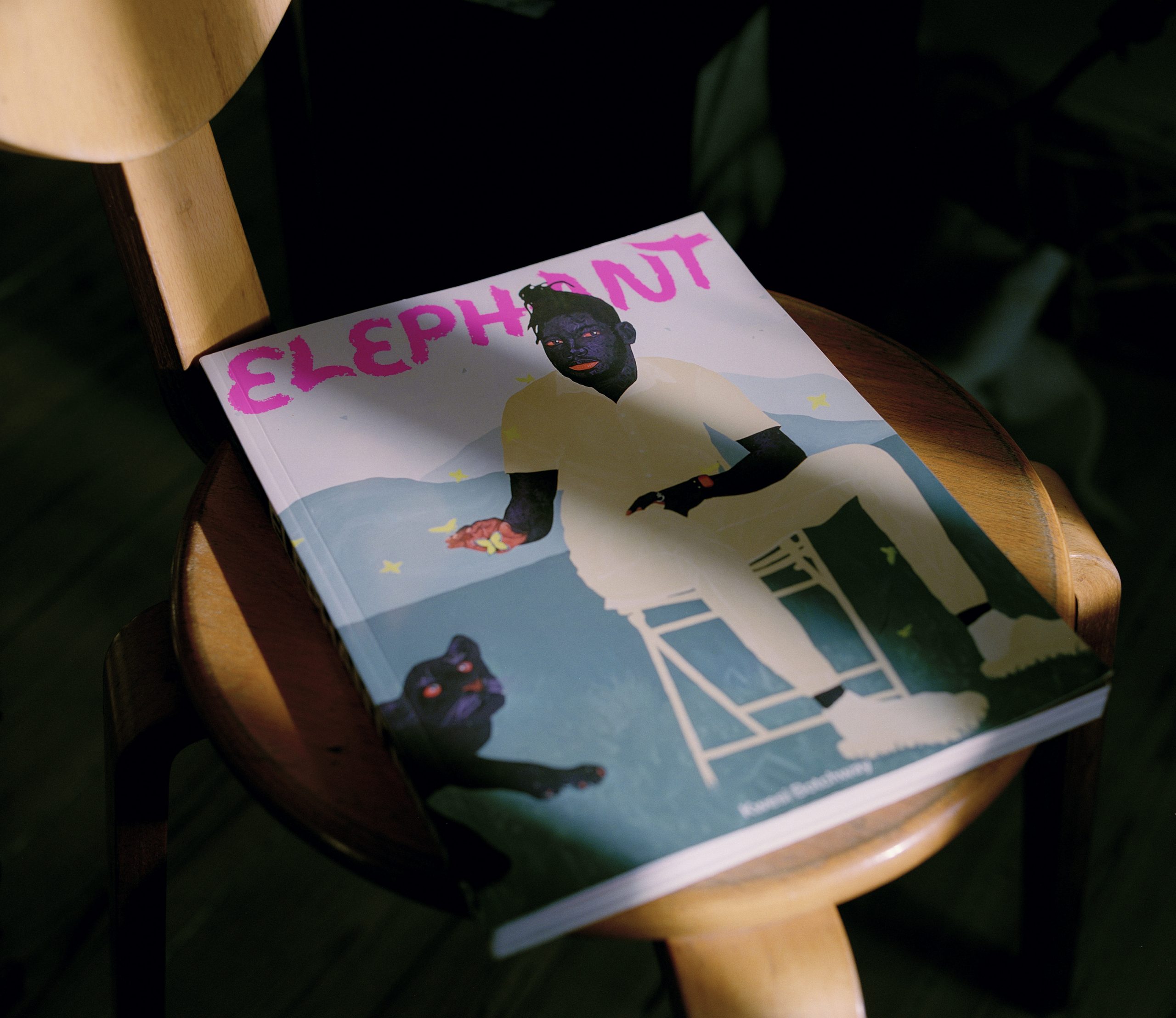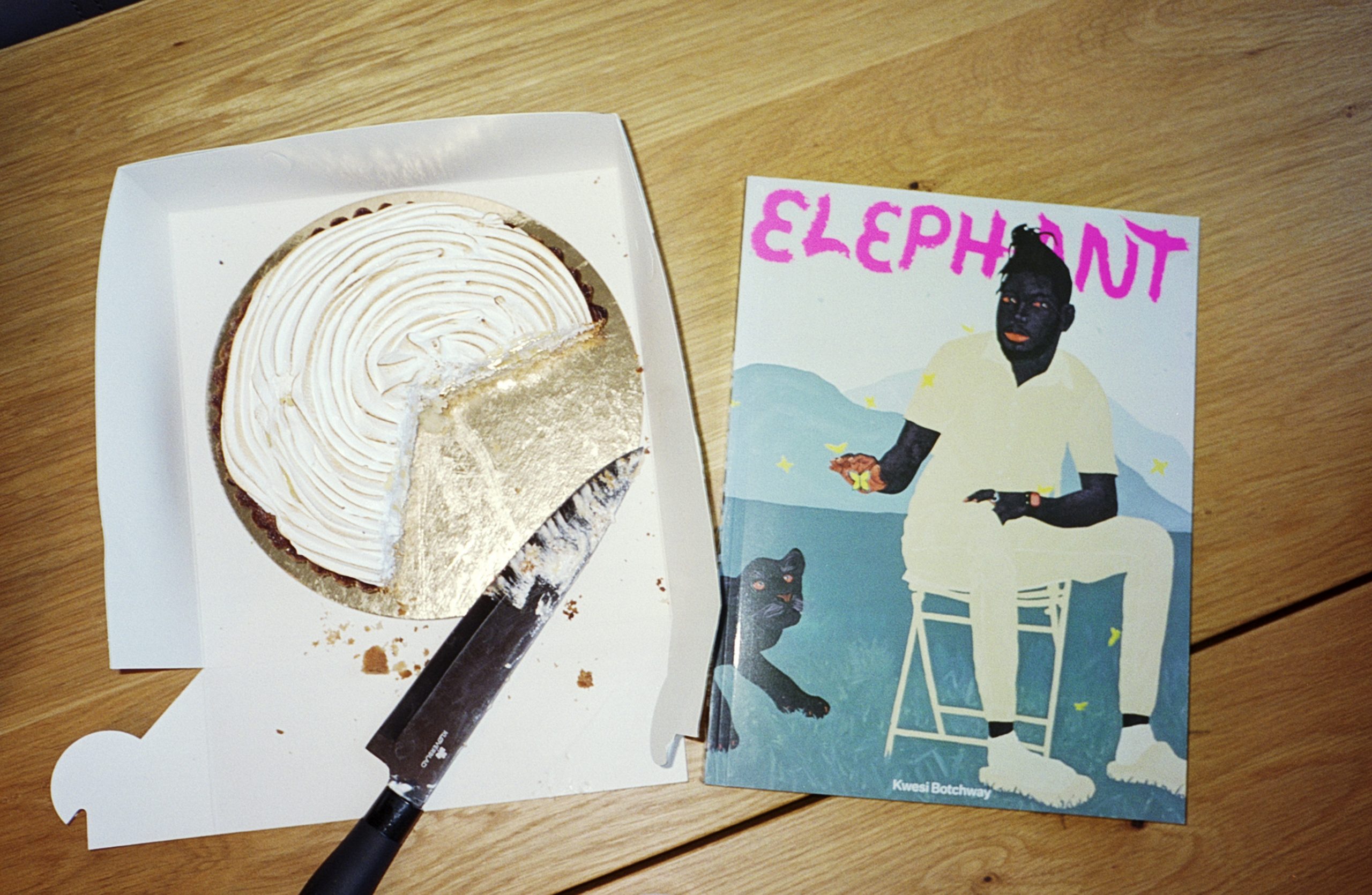
Metamorphosis, whether it be a seasonal process or a magical act, is always tied to the idea of growing and developing, of ‘levelling up’ and entering the world anew. For Kwesi Botchway, the term was central to developing his gargantuan, triple self-portrait Metamorphose in July, which he created during the pandemic, and a detail of which features on the limited-edition cover of Elephant’s brand-new Spring/Summer 2021 issue. The painting presents three visions of the artist seated against a Ghanaian landscape, surrounded by symbols of resilience and strength. At a time when the world is undergoing such profound change, this image is a refreshing vision of contemplation, hope and pride.
Here he talks about the process of creating this particular work, while you can read his conversation with fellow cover artist Otis Kwame Kye Quaicoe in the Elephant print edition, where the pair discuss portraiture, Black identity and building new narratives with Amah-Rose Abrams.
- Kwesi Botchway, Metamorphose in July, 2019. Photo: Nii Odzenma. Courtesy the artist and Gallery 1957
What inspired you to create this triple self-portrait? And on such an enormous scale?
As hinted by the title, I was going through many personal transitions at the time I was painting Metamorphose. Last year, in the midst of the pandemic, I was in the studio and felt compelled to explore three perspectives of myself that I feel best describe my character. Most of the time, I’m focused on telling the stories of my friends, and sometimes strangers, through portraiture. When it came to my self-portrait, I wanted viewers to understand this period of time and embrace the change that many people experience. There is no straightforward way of describing the Black identity. Most portraiture is singular, which is something I wanted to draw away from. I wanted viewers to appreciate all the different parts of me.

What about the symbols present in the piece? The mountains, the panther and what I think are butterflies—do they hold particular significance?
I enjoy being outdoors. It’s where I’m usually able to regain the energy I put forth into my work. I wanted to bring that aspect into the forefront; rejecting traditional Western landscape paintings as a means to champion the Ghanaian and African diaspora. The black panther is closely associated with resilience, valour, beauty and strength. It is indicative of qualities that define me and the Black identity, and this animal is not often seen in historical paintings. The butterflies, in yellow, refer to a period of transformation. All subjects found in my self-portrait have a meaning that I hold dearly, in my beliefs and beyond.
“All subjects found in my self-portrait have a meaning that I hold dearly, in my beliefs and beyond”

I love the way each figure features an outfit painted in one particular pastel shade, with a matching chair! What was the thinking behind that?
I chose to use pastel colours to describe the nature of the Black identity, or Blackness, which holds many different values and meaning. By matching my outfits with the chairs, I am signifying the instinctive way we change with time, whether we are ready or not. One’s ability to remain true to their core no matter their changing nature. In choosing soothing colours, I was able to place emphasis on the blackness of my skin complexion.
How does it feel to be featured on the cover of Elephant magazine?
It’s an honour to have my work spread across the cover of a well-respected magazine targeted towards fellow artists and creatives. Art is often seen within gallery spaces or museums, so to reach another platform, where my work is accessible to art enthusiasts, is great.







